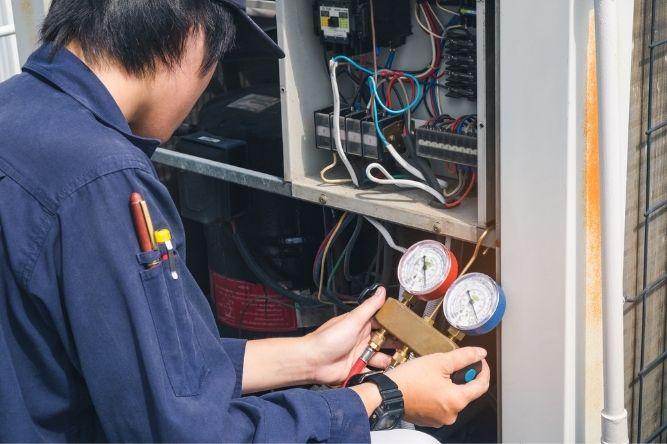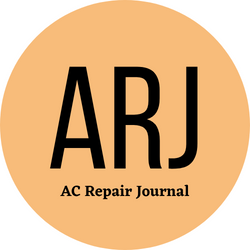Furnace Inspection and Tune-Up
by siteadmin

Furnaces burn fuel to produce the heat that regulates your home’s temperature. The combustion process must be precise for efficiency and safety reasons.
Having an annual furnace tune-up prevents minor problems from becoming major ones. It also keeps the system running efficiently.
High energy bills are a common sign of a poorly functioning furnace. A technician will perform a maintenance tune-up to improve the furnace’s ability to achieve the thermostat’s set temperature.
Clean the Furnace
Your furnace is a complex piece of machinery that requires special care to keep it running efficiently. Throughout the year, normal operation puts stress on components, which can cause them to wear out and hinder system performance. If left unattended, these problems can result in expensive repair bills and lower efficiency. Worse still, a poorly maintained furnace can also shorten its lifespan.
Furnace Repair Sandy Utah visit is a great way to prevent these problems. During the inspection, your technician will perform several routine tasks to keep your heating system in good working condition.
First, they will clean the blower assembly by vacuuming or using a brush to remove dust and rust. They will also vacuum or wipe down the burner chamber door and hot surface igniter, and clean all access panels and doors. They may also pour water down the drain line to ensure it is not clogged.
The blower assembly pulls air in through the back of the unit, then pushes it out through vents around the home. This process creates warm air, but a dirty blower can push dust and other debris through the ventilation system into rooms where it shouldn’t be. To avoid this, it is important to clean the blower assembly regularly with a brush or cloth dipped in mild detergent.
Another common problem is a dirty heat exchanger. Over time, a dirty heat exchanger can lead to a cracking of the metal that surrounds the flame. When this happens, it will not be able to burn fuel efficiently, which results in poor air quality for your home. The best way to protect your heat exchanger from this is by regularly cleaning it with a brush and a vacuum hose.
Other signs of a dirty heat exchanger include a pilot light that is constantly on, or one that goes out frequently. These are both indicative of a dirty flame, and they could lead to carbon monoxide leaks. A carbon monoxide leak can be deadly for occupants of the home, so a carbon monoxide detector is a must for every homeowner.
Change the Filter
Furnace filters help to prevent dust, hair and other debris from entering the furnace. However, these filters will eventually become dirty and need to be replaced. Dirty filters can cause a variety of problems including overheating and reduced system life.
Furnaces that are forced to operate with dirty air filters can overheat, causing the heat exchanger to crack and allowing dangerous carbon monoxide to enter your home. A dirty filter can also coat delicate sensors and moving parts, forcing them to overwork which will reduce their lifespan.
Using a clean filter will also reduce energy usage. Dirty furnace filters force the blower fan to work harder to move air through the house which can lead to higher utility bills. A regular filter change can cut down on these costs as well as help to keep your house warm and comfortable.
When changing the filter, turn off the furnace. Then, remove the access panels that cover the filter compartment. Remove the old filter and dispose of it. Then, open the compartment door and slide a new filter in place. Check that the filter is the right size for your unit by comparing it to the old one. If the specifics aren’t printed on the filter frame, refer to your owner’s manual for the correct size. Also, make sure that the arrow on the filter frame is pointed toward your furnace in the direction of air flow.
After inserting the new filter, close the access panels and turn your furnace back ON. It’s important that the switch is on “on” and not “fan” to avoid accidentally sucking up any loose debris inside the unit.
Filters come in many different sizes and types, from basic fiberglass with cardboard frames to more expensive reusable and washable varieties. The most basic types of filters trap large particles of dust and other airborne particulates and are designed to be replaced every 1-2 months. More expensive filters will perform the same function but will trap smaller dust particles and other pollutants as well, such as mildew, mold spores and bacteria.
Check the Thermostat
The thermostat is a vital component of your home heating system. If it fails, you will have difficulty heating your home to the desired temperature. This will result in high energy bills. A furnace inspection and tune-up will ensure the thermostat is working properly. Furnace Repair Sandy Utah will tighten any loose wires and clean areas that are prone to dust and grime. A carbon monoxide leak is another potential issue with gas-powered furnaces. Installing a carbon monoxide detector near your furnace can help protect your family from this dangerous substance.
Furnaces that are not regularly serviced have a shorter lifespan and tend to break down at an inconvenient time. Most manufacturers require proof of regular professional maintenance in order to uphold a warranty.
A professional furnace tune up checklist includes a complete lubrication of the mechanical equipment to reduce friction between the operating parts. It also involves testing the pilot light and gas pressure, and a filter replacement or cleaning.
If your furnace is not turning on, you should first check the breaker box to make sure no switches were flipped. If this does not fix the problem, you will need to call an electrician for further assistance.
Inconsistent temperature levels in different rooms are another sign that your furnace may need a tune-up. This can be due to blocked vents, a broken thermostat, or a system that is not adequately sized for your home.
A lack of heat during colder temperatures can be a real discomfort for any household. It can also damage your house, causing pipes to freeze and other problems. A furnace tune up can prevent this by making sure the unit is able to keep your entire house warm.
A professional technician will look at the entire furnace and venting system during a tune-up to ensure it is operating safely. They will test the flame color and look for any cracks or other signs of wear and tear that could put your safety at risk. They will also inspect the blower fan, blower motor, and coils to ensure they are in good condition. They will also replace or clean the air filter to improve efficiency and extend the life of the furnace.
Clean the Condensate Line
During normal operation, your HVAC system produces condensation from the hot flue gases it heats. The condensation cools, forming water vapor that is captured in your system’s drain line and discharged outside. Keeping the condensate line clean helps keep the drain pan from getting full, which prevents the water from flowing into your house and causing damage.
When a condensate line is clogged, the overflow water causes mold and mildew to form in the drain pan. It can also cause water spots and mold to appear on the ceiling or other areas near the HVAC unit. If the problem is not addressed immediately, it can lead to serious and expensive damage.
If you are unsure whether or not the condensate line is clogged, turn off your HVAC system by turning off the power at the thermostat and breaker box. Then, find the drain line and look for standing water in the overflow drip pan. A small amount of water is normal in the drip pan during humid weather, but if there is excess water or the line is dripping anywhere else, the condensate line is likely clogged and needs cleaning.
Start by removing any excess water from the drain pan with paper towels or a wet/dry shop vac. Then, remove the cover from the drip pan and use a plumbing snake to clear the clog. When you are done, check the end of the drain line where it exits your home and use a plumbing snake on that end as well to ensure there is no clog.
Once the drain line is clear, flush it with distilled vinegar. A half cup of vinegar is enough to clean out most clogs. After pouring the solution into the drain line, let it sit for half an hour to 45 minutes. Then, rinse it out with hot water and wipe the pan down with a rag to keep mold and mildew from growing in the future.
Furnaces burn fuel to produce the heat that regulates your home’s temperature. The combustion process must be precise for efficiency and safety reasons. Having an annual furnace tune-up prevents minor problems from becoming major ones. It also keeps the system running efficiently. High energy bills are a common sign of a poorly functioning furnace. A…
Recent Posts
- Transforming Philadelphia Homes: Expert Stucco Remediation Services You Can Trust
- Buckeye Roofing of Columbus Brings Expert Roof Repair Services to Columbus, GA
- Gateway Plumbers of Aurora: Safeguarding Homes with Reliable Sump Pump Installations
- Oasis Landscaping of Harrisburg Brings Beautiful Outdoor Transformations to the Capital Region
- By Design Kitchen Remodeling Brings Top-Quality Kitchen Renovations to Tacoma, WA
